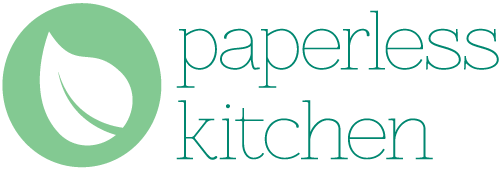PaperlessKitchen Blog
Biodegradable Plastics Just One Piece of the Pu...
Today, a number of products come in plastic packaging that is labeled as biodegradable and an increasing number of stores are offering disposable bags that they say are biodegradable. A...
Biodegradable Plastics Just One Piece of the Pu...
Today, a number of products come in plastic packaging that is labeled as biodegradable and an increasing number of stores are offering disposable bags that they say are biodegradable. A...
Paperless Kitchen Summer Sale on Amazon Prime Day!
We're Celebrating Summer With a Sale! We've partnered with Amazon to provide extraordinary deals on July 12 during Amazon Prime Day! During this one day sale, we're offering a variety of...
Paperless Kitchen Summer Sale on Amazon Prime Day!
We're Celebrating Summer With a Sale! We've partnered with Amazon to provide extraordinary deals on July 12 during Amazon Prime Day! During this one day sale, we're offering a variety of...
New York-based Restaurant Reveals Eco-friendly ...
New York-based restaurant Just Salad unveiled its latest line of kitchen equipment that takes the environment into consideration. The smart-heating and energy-efficient designs used by the restaurant will be used as a...
New York-based Restaurant Reveals Eco-friendly ...
New York-based restaurant Just Salad unveiled its latest line of kitchen equipment that takes the environment into consideration. The smart-heating and energy-efficient designs used by the restaurant will be used as a...
Green Essentials for the Beach
Planning a beach vacation this year? When you're headed to the shore, you need to bring along your towel and your bathing suit, but that's not all that goes into...
Green Essentials for the Beach
Planning a beach vacation this year? When you're headed to the shore, you need to bring along your towel and your bathing suit, but that's not all that goes into...
A Paperless 4th of July
Hosting the 4th of July picnic this year? You can make the occasion a green one by eliminating paper and plastic from the event entirely. These products can help you...
A Paperless 4th of July
Hosting the 4th of July picnic this year? You can make the occasion a green one by eliminating paper and plastic from the event entirely. These products can help you...
What's Lurking in Your Sunscreen?
Summer's here, and when you're heading outdoors, it's important that you slather on the sunscreen to protect your skin from the damaging effects of UV. Wearing sunscreen every time you...
What's Lurking in Your Sunscreen?
Summer's here, and when you're heading outdoors, it's important that you slather on the sunscreen to protect your skin from the damaging effects of UV. Wearing sunscreen every time you...
